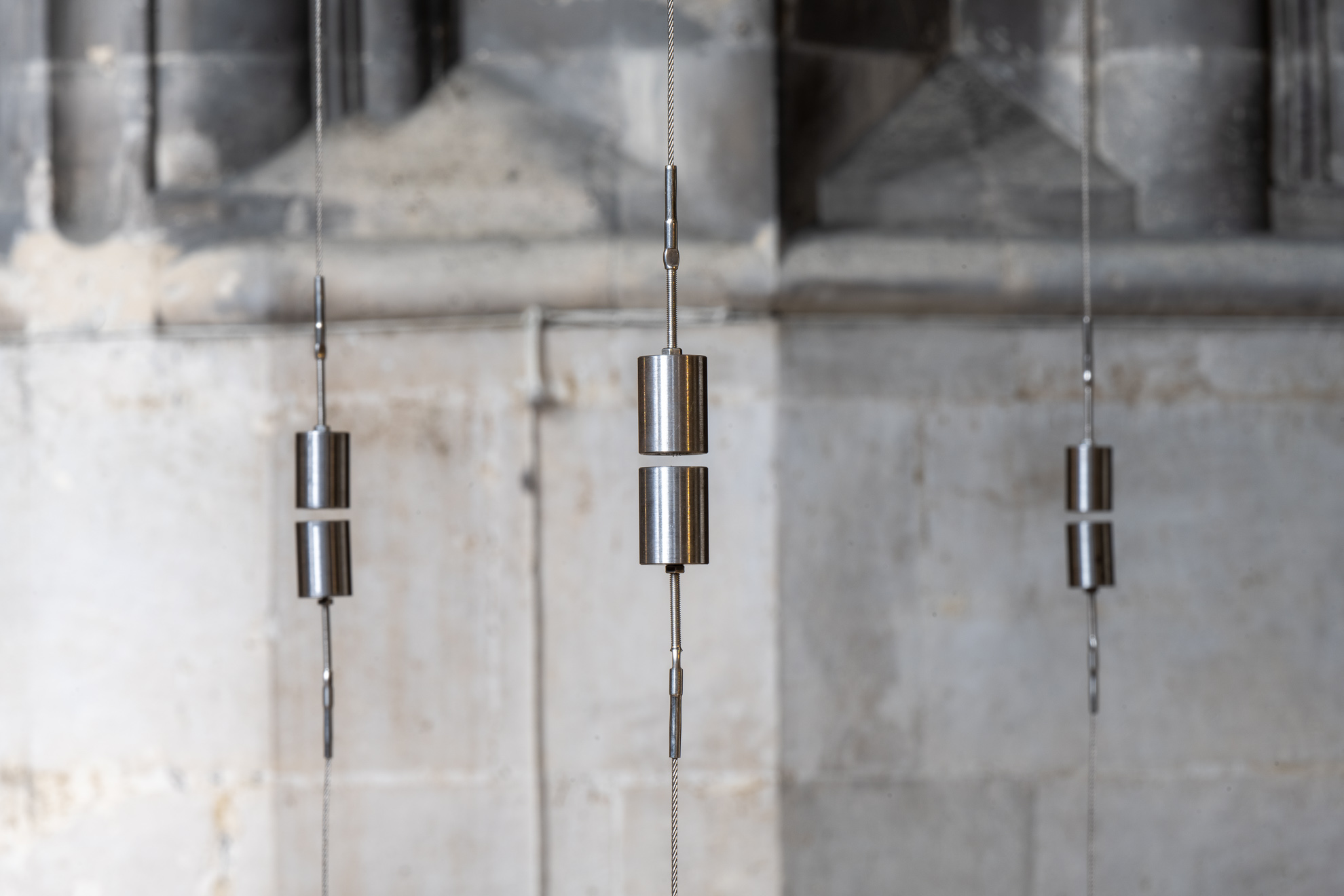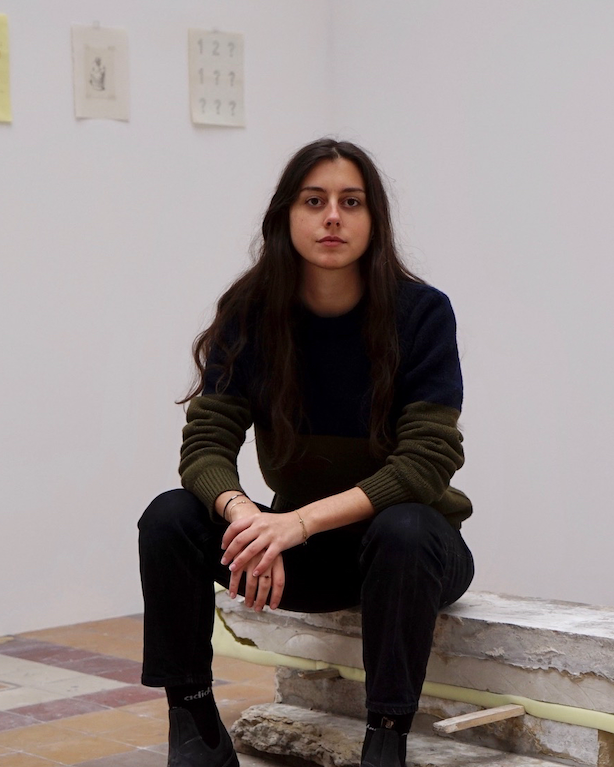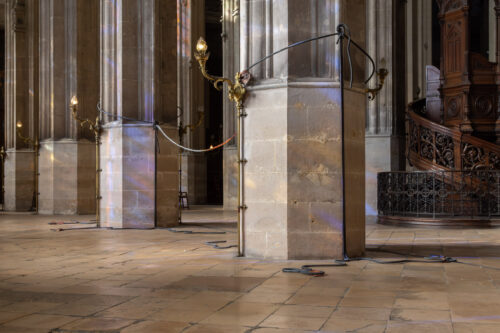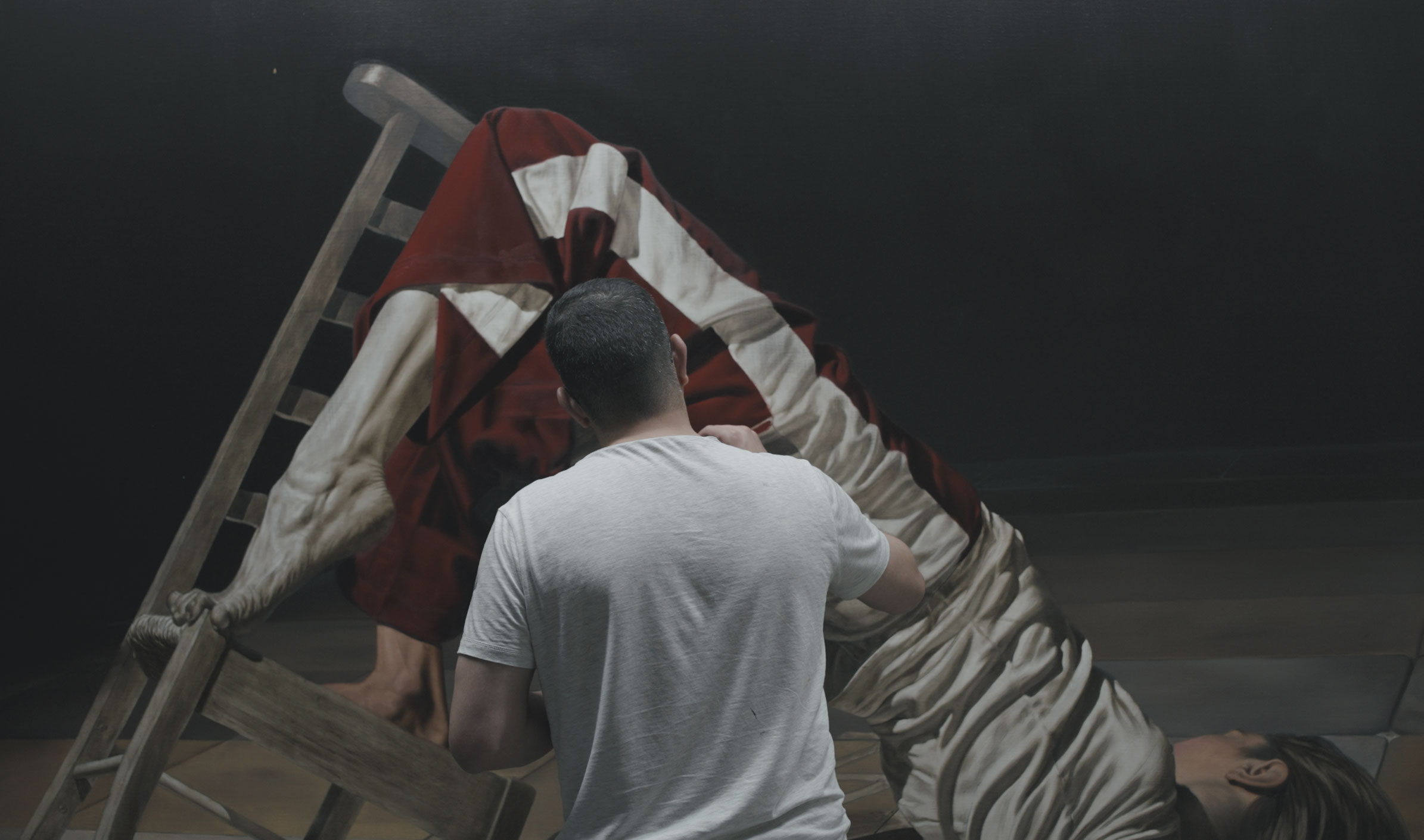
Temple Pulse, Lifts, Métaflexion
Rubis Mécénat Prize
Saint-Eustache church, Paris
2022
Hélène Janicot
Hélène Janicot is the 2022 winner of the Rubis Mécénat Prize in partnership with Beaux-Arts de Paris, which offers emerging artists from the school the chance to create an original installation for the church of Saint-Eustache. Working with curator Audrey Illouz, she presented a three-station installation in autumn 2022.
Hélène Janicot’s project for St. Eustache Church is structured around three artworks. The first, Temple Pulse, opens the exhibition and tests the force of attraction. Hélène Janicot redesigns the octagonal structure of the church’s pillars by means of metal wires that run vertically. The whole is interrupted by an infra-thin gap that opens at the height of the head and is maintained by the presence of tensioned magnets.. A second station, (Lifts), offers a completely different relationship of scale: a transparent slab reveals a hole. Reminiscent of an archaeological dig, the hole also refers to the beginning and the fall of bodies. In the Sacré-Coeur chapel, she proposes a final work, Métaflexion, and takes the imprints of her own kneeling body in the concrete. With this first in situ project, the artist addresses the very essence of the place through a series of refined but tense gestures, and invites us to a physical and sensitive experience that sets the body and mind in motion.


